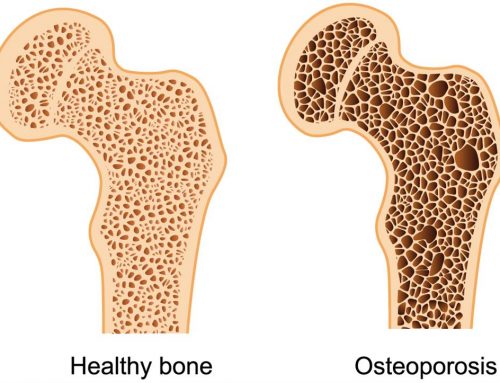Cerebritis: a Sequel of Lupus
Cerebritis: a Sequel of Lupus
NORMAN B. GAYLIS, ROY D. ALTMAN, STEVEN OSTROV, and ROBERT QUENCER
The Selective Value of Computed Tomography of the Brain in Cerebritis Due to Systemic Lupus Erythematosus
Abstract.Systemic lupus erythematosus (SLE) and steroid effects on the brain were measured by computed tomography (CT). Of 14 patients with SLE cerebritis, 10 (71%) had marked cortical atrophy and 4 (29%) minimal atrophy. None were normal by CT. Controls included 22 patients with SLE without cerebritis receiving corticosteroids; this group had normal CT scans in 16 (73%) and minimal cortical atrophy in the remaining 6 (27%). Follow-up CT on 5 patients with cerebritis was unchanged. CT of the brain is a minimally invasive technique for documenting SLE cerebritis. CT may also help differentiate cerebritis from the neuropsychiatric side effects of corticosteroids. (J Rheumatol 9: 850-854, 1982)
The syndromes of central nervous system (CNS) dysfunction or cerebritis from systemic lupus erythematosus (SLE) have often presented difficulty in diagnosis and in differentiating side effects of therapy from complications of the disease itself (1,2).
In some cases, neuropsychiatric illness may precede SLE and be unrelated (3). However, in the past, most cases of abnormal CNS function in SLE had been ascribed to active SLE itself. More recently, there has been more concern about the neuropsychiatric complications of steroid therapy (2). Antimalarials, not uncommonly used in therapy of SLE, have also been implicated as a cause of CNS dysfunction in SLE patients (4). Further confusion as to the reasons for CNS dysfunction arises from complications of SLE itself, such as infection and uremia.
Since CNS involvement is the second leading cause of death in SLE (5), a method or methods of differentiating these entities is needed. Consistent differentiation has not evolved with the use of clinical parameters, serology (6), CSF analysis (7, 8), electroencephalogram (EEG) (9), or radionuclide brain scans (10). Enhanced computed tomography (CT) has been shown of benefit in differentiating intracerebral hemorrhage from infarction in patients with focal neurologic deficits (11). Also response to higher dose steroids has not been consistently helpful in CNS lupus (9).
To date, CT in patients with non-focal neurologic deficits has produced somewhat conflicting results (12-44). We attempted to clarify the findings of CT of the brain in SLE patients with and without cerebritis. We also tried to determine the effects of corticosteroid therapy on CT of the brain. Our objectives were to determine if CT scanning can help decide which approach to therapy is needed in treating a patient with SLE who develops neurological abnormalities.
MATERIALS AND METHODS
Thirty-four patients from the Jackson Memorial Hospital and Miami Veterans Administration Medical Center complex with 4 or more ARA criteria for SLE had CT of the brain. Of these patients with SLE, 14 had clinical features of cerebritis and 20 without cerebritis on longterm steroid therapy served as controls. Clinical examinations were performed by 1 of our group (NG). The CT of the brain was independently read by 2 neuroradiologists (SO and RQ), whose only knowledge of the patients was their age, sex and the diagnosis of SLE. The study covered an 18 month time period.
Cerebritis was defined as an abnormality of central neurological function identified by history/examination and noted as a change from a prior state in the absence of
other possible etiologies. Longterm steroid therapy was defined as a minimum of prednisone 40 mg (or equivalent) daily for 3 months or continuous prednisone 20 mg (or equivalent) daily for at least 6 successive months prior to the evaluation. CT was performed in the central plane parallel to Reid’s baseline at 1 cm intervals. Contrast dye was used when not contraindicated.
Marked cortical atrophy by CT scan was defined as the presence of widening of cortical sulci and cerebral lateral ventricular dilatation – the ratio of the maximum diameter of the frontal horns to the greatest internal diameter of the skull being more than 0.27 (15). Minimal cortical atrophy included focal and diffuse widening of the cortical sulci in the presence of normal cerebral lateral ventricular size. A normal CT had neither widening of the cortical sulci nor the cerebral ventricles. The patient’s age was limited to 50 years because of the occurrence of cortical atrophy with increasing age as an incidental finding. Dilatation of the lateral ventricles in the presence of normal cortical sulci was felt to represent increased intracranial pressure and not cortical atrophy, hence was not considered in this grading system.
Statistical analysis was carried out by the chi square method.
RESULTS
Some abnormality of the brain by CT was present in 11/14 patients during their 1st attack of SLE cerebritis. At the initial presentation with SLE cerebritis, 9 of 14 patients had marked cortical atrophy by CT and 2 had minimal cortical atrophy. At that time, a normal CT was found on 3 patients with SLE cerebritis. Two of these patients were on 30 and 40 mg prednisone at the time of the normal CT. The 3rd had been on corticosteroids previously but not in 4 months prior to the normal CT. Corticosteroids were administered in all 3 patients and after remission and reexacerbation of SLE cerebritis, repeat CT demonstrated development of marked cortical atrophy in 2 of these patients and minimal cortical atrophy in the other. The role of corticosteroids in their cortical atrophy is unclear.
Ratios of frontal horns to the greatest diameter of the skull ranged from normal (0.23) to 0.31.
No patients with repeat attacks of SLE cerebritis had a normal CT of the brain (Table 1). After clinical remission of the cerebritis and a 1-15-month follow-up, repeat CT in 5 patients failed to show any regression of the existent cortical atrophy.
Table 1. SLE findings by CT in patients with and without cerebritis.
| Normal | Minimal Cortical Atrophy | Marked Cortical Atrophy | |
|---|---|---|---|
| SLE with cerebritis * | 12 | 4 | 10 |
| SLE without cerebritis * | 12 | 6 | 4 |
| * p < .001. See Methods |
All patients had taken steroids at some time previously
There was no significant difference between the groups of patients with cerebritis and those without cerebritis when comparing duration disease and time or mean dose on steroids (Table 2).
None of the SLE patients on corticosteroids without cerebritis had marked cortical atrophy by CT. Minimal cortical atrophy was present in 6 of 20 (30%). The majority (70%) had normal CT of the brain (Figure 1).
The neurologic features of our group were correlated with the CT results on Table 3. A psychosis of organic origin was present in 11 patients and seizures in 5 patients. Two patients had both an organic psychosis and seizures on the same presentation. Patient 5 had cortical atrophy with a temporal artery aneurysm and subsequent subarachnoid hemorrhage leading to death. There was no correlation between the type of clinical presentation and the presence of minimal or marked cortical atrophy.
Treatment with corticosteroids was beneficial in 11 of 14 patients with cerebritis. One patient responded to corticosteroids after the addition of cyclophosphamide. One patient (No. 1) was institutionalized with an irreversible organic mental syndrome.
|
Table 2. SLE comparison of duration disease and corticosteroid administration prior to cerebritis.
|
|||
|
Duration SLE
(Yr) |
Time on Steroids
(Yr) |
Daily Dose * Steroid
(Mean Daily Dose) |
|
|
SLE with cerebritis
|
6.8
|
2.9
|
36
|
|
SLE without cerebritis
|
4.8
|
3.1
|
43
|
|
* Prednisone or equivalent.
|
|||
Fig. 1. CT scan at the level of the frontal horns.
Fig. 1a. Post contrast axial CT scan in Patient 1 shows no evidence of cortical atrophy or ventriclar enlargement.
Fig. 1b. In Patient 2, Ct shows minimal atrophy as evidenced by normal ventricular size but dialated cortical sluci.
Fig. 1c. In Patient 9 atrophy is demonstrated with enlarged ventricles and sulcal dialation in addition to incidental right basal ganglionic calcification.
|
Fig. 1a.
 |
Fig. 1b.
 |
Fig. 1c.
 |
| Table 3. Clincal characteristics of patients with SLE cerebritis: correlation of neurologic features with cortical atrophy (CoA) by CT. |
||||||
| Pts | Age | Sex | Neurological Features | 1st Episode Cerebritis | 2nd Episode Cerebritis | Convalescence |
| 1 | 30 | F | Acute catatonia | Normal (Figure 1A) | Marked CoA | |
| 2 | 21 | M | Seizures, movement disorder | Minimal CoA (Figure 1B) | Minimal CoA | |
| 3 | 19 | F | Seizures | Marked CoA | ||
| 4 | 20 | F | Hallucinations, coma | Normal | Minimal CoA | |
| 5 | 29 | F | Coma, hemiplegia, seisures | Marked CoA | ||
| 6 | 26 | F | Headache, lethargy, confusion, coma | Normal | Marked CoA | Marked CoA |
| 7 | 18 | M | Seisures | Marked CoA | ||
| 8 | 14 | M | Seisures, organic brain syndrome | Marked CoA | Marked CoA | |
| 9 | 16 | F | Organic brain syndrome | Marked CoA (Figure 1C) | Marked CoA | |
| 10 | 22 | F | Organic brain syndrome | Marked CoA | Marked CoA | |
| 11 | 21 | F | Organic brain syndrome | Marked CoA | ||
| 12 | 25 | F | Headaches | Minimal CoA | ||
| 13 | 27 | F | Schizophrenic depression | Minimal CoA | ||
| 14 | 34 | F | Change in mental status | Marked CoA | ||
Systemic manifestations of SLE included renal disease in 12 of 14 of the cerebritis group versus 9 of 20 in the noncerebritis group (p < 0.05), and systemic vasculitis in 6 of 14 with cerebritis versus 6 of 20 in the noncerebritis group (0.05 < p < 0.10).
Raynaud’s syndrome was present in 5 of 14 with cerebritis and 10 of 22 in the noncerebritis group. However, in the noncerebritis group, 5 of the 6 patients with minimal cortical atrophy had Raynaud’s phenomenon. Serologic tests and cerebrospinal fluid findings were not consistent or helpful in the evaluation of cerebritis in this group.
REFERENCES
1. Estes D, Christian CL: The natural history of systemic lupus erythematosus by prospective analysis. Medicine 50: 85-95, 1971.
2. Dubois EL: Lupus Eythematosus, 2nd Ed, University of Southern California Press, 1974, p 633.
3. Kremer JM, Rynes RI, Bartholomew LE, et al: Nonorganic non-psychotic psychopathology (NONPP) in patients with systemic lupus erythematosus. Semin Arthritis Rheum 11: 177-181, 1981.
4. Dubois EL: Systemic lupus erythematosus: Recent advances in diagnosis and treatment. Ann Intern Med 45: 163-184, 1956.
5. Sergent JS, Lockshin MD, Klempner MS, et al: Central nervous system disease in systemic lupus erythematosus. Am J Med 58:644-654, 1975.
6. Winfield JB, Brunner C, Koffler D: Serologic studies in patients with systemic lupus erythematosus and central nervous system dysfunction. Arthritis Rheum 21: 289-294, 1978.
7. Kassan SS, Kagen LJ: Central nervous system lupus erythematosus – measurement of cerebrospinal fluid cyclic GMP and other clinical markers of disease activity. Arthritis Rheum 22: 449-457, 1979.
8. Petz LD, Sharp GC, Cooper NR, et al: Serum and cerebral spinal fluid complement and serum autoantibodies in systemic lupus erythematosus. Medicine 50: 259-275, 1971.
9. Feinglass GJ, Arnett FC, Dorsch LA, et al: Neuropsychiatric manifestations of systemic lupus erythematosus: Diagnosis clinical spectrum and relationship to other features of the disease. Medicine 55: 323-339, 1976.
10. Bennahum DA, Messner RP, Shoop JD: Brain scan findings in central nervous system involvement by lupus erythematosus. Ann Intern Med 81: 763-765, 1974.
11. Bilaniuk LT, Patel S, Zimmerman RA: Computed tomography of systemic lupus erythematosus. Radiology 124: 119-121, 1977.
12. Gonzalez-Scarano F, Lisak RP, Bilaniak LT, et al: Cranial computed tomography in the diagnosis of systemic lupus erythematosus. Ann Neurol 5: 158-165, 1979.
13. Betson J, Reag M, Winter J, et al: Steroids and apparent cerebral atrophy on computed tomography. J Comput Assist Tomogr 2: 16-23, 1978.
14. Killian PJ, Schnapf DJ, Lawless OJ: Computerized axial tomography of central nervous system lupus (abstr). Arthritis Rheum 22: 628-629, 1979.
15. Evans W: An encephalographic ratio for estimating ventricular enlargement and cerebral atrophy. Arch Neurol Psychiatr 47: 931-937, 1942.
16. Atkins CJ, Kondon JJ, Quismorio FP, et al:: The choroid plexus in systemic lupus erythematosus. Ann Intern Med 76: 65-72, 1972.
17. Lanpert PW, Oldstone MBA: Most immunoglobulin G and complement deposits in choroid plexus during spontaneous complex disease. Science 180: 400-410, 1973.
18. Peress NS, Roseburgh VA, Gelfand MC: Binding sites for immune components in human choroid plexus. Arthritis Rheum 24: 520-526, 1981.
19. Mintz G, Fraga A: Arthritis in systemic lupuserythematosus. Arch Intern Med 116: 55-66, 1965.
20. Johnson RT, Richardson GP: The neurological manifestations of systemic lupus erythematosus. A clinical-pathological study of 24 cases and review of the literature. Medicine 47: 337-369, 1968.
21. Johnson GD, Edmonds JP, Holborow GJ: Precipitating antibodies to DNA detected by 2 stage electro immunodiffusion. Study in systemic lupus erythematosus and rheumatoid arthritis. Lancet 2: 883-886, 1973.
22. Dorsch CA, Chia D, Barnett EV: Correlation of persistent precipitating anti DNA antibodies with neurologic involvement in systemic lupus erythematosus (abstr). J Rheumatol (suppl 1) 1: 114, 1974.




